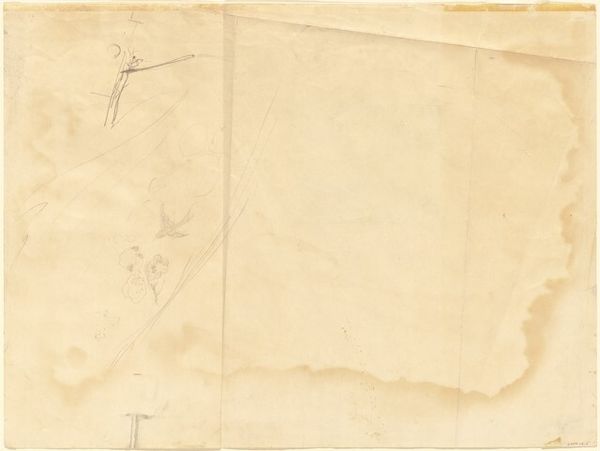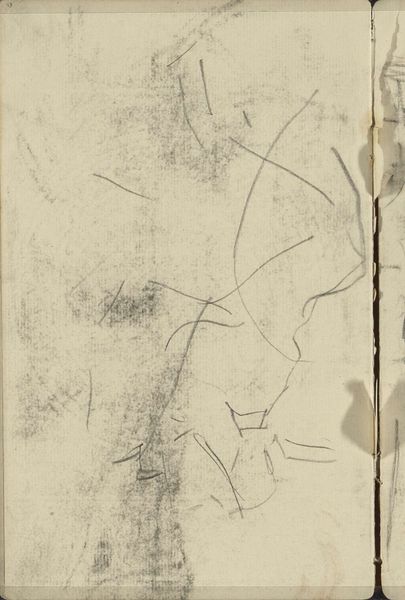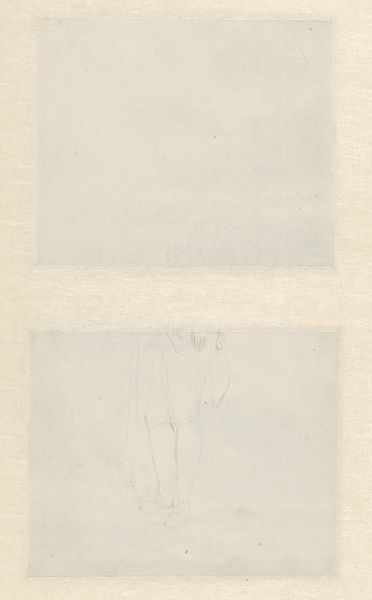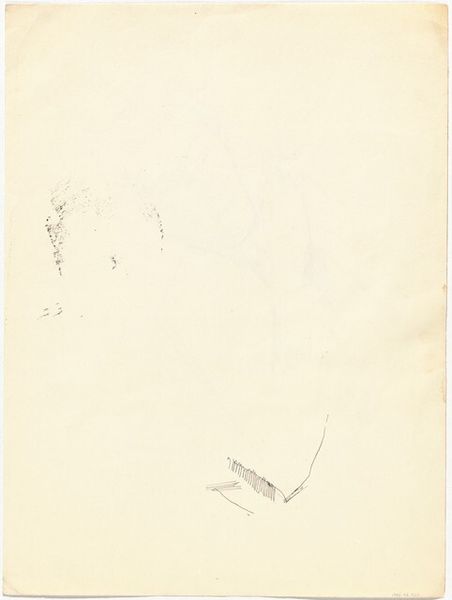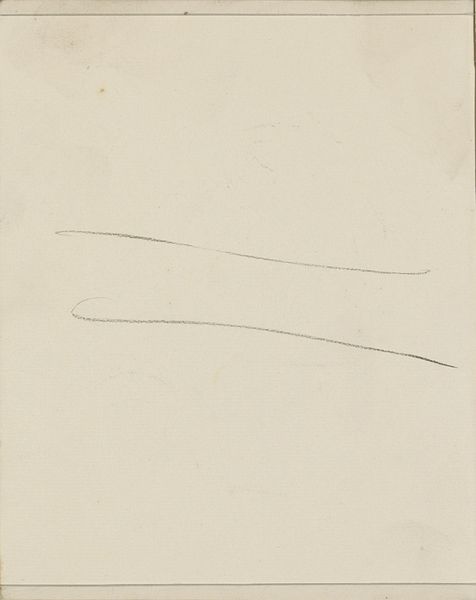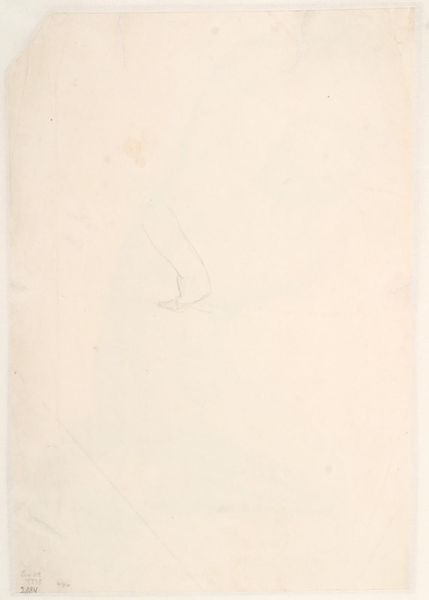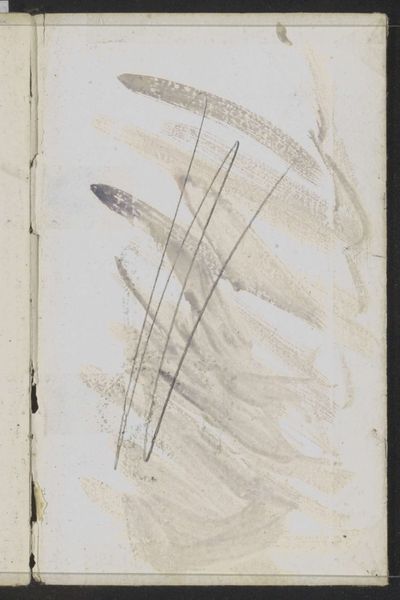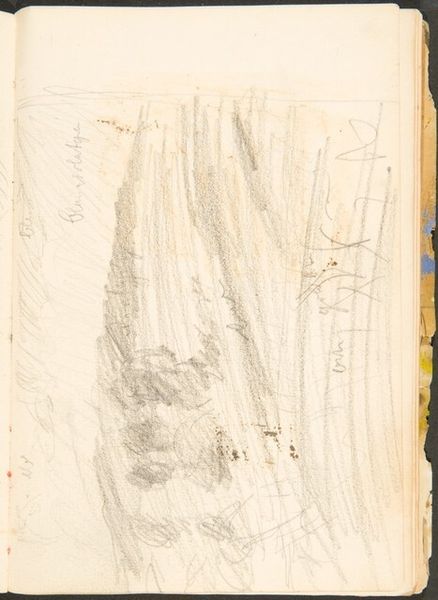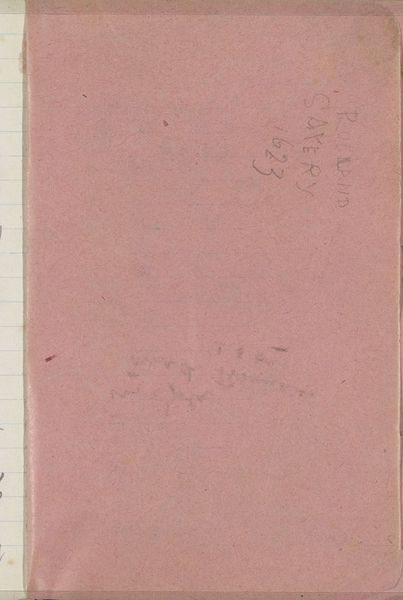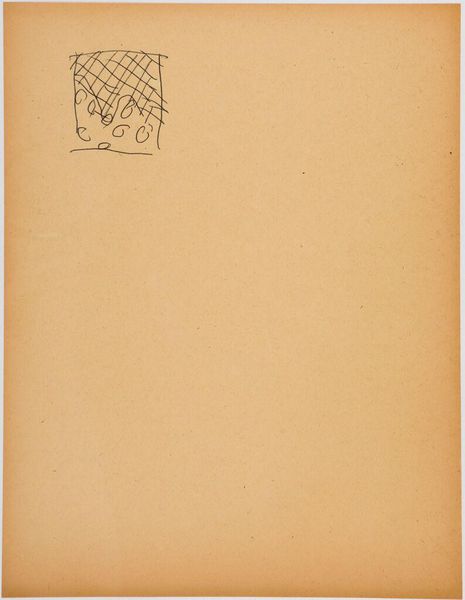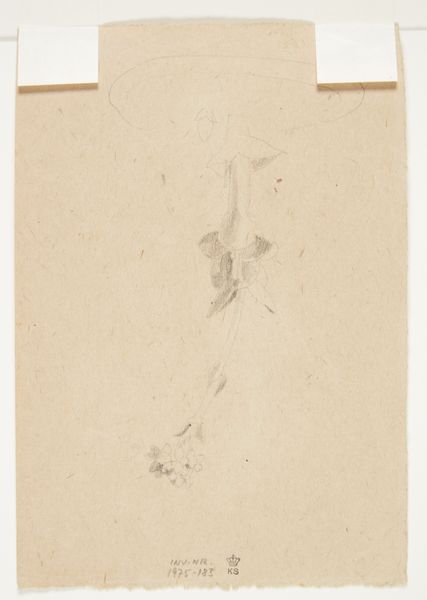![Untitled [verso] by Mark Rothko](/_next/image?url=https%3A%2F%2Fd2w8kbdekdi1gv.cloudfront.net%2FeyJidWNrZXQiOiAiYXJ0ZXJhLWltYWdlcy1idWNrZXQiLCAia2V5IjogImFydHdvcmtzLzQyYjM4ZTA0LTI0NzUtNDM4NS05OGU3LWFiM2ViYzRiMmY1MC80MmIzOGUwNC0yNDc1LTQzODUtOThlNy1hYjNlYmM0YjJmNTBfZnVsbC5qcGciLCAiZWRpdHMiOiB7InJlc2l6ZSI6IHsid2lkdGgiOiAxOTIwLCAiaGVpZ2h0IjogMTkyMCwgImZpdCI6ICJpbnNpZGUifX19&w=1080&q=75)
drawing, paper, pencil
#
drawing
#
paper
#
abstract
#
pencil
#
line
Copyright: National Gallery of Art: CC0 1.0
Curator: Here we have an untitled drawing by Mark Rothko. The designation "verso" suggests it's the back of another work, perhaps a preliminary sketch, rendered with pencil on paper. It's sparse, almost ephemeral. What strikes you first about this work? Editor: It's so fragile. The paper is stained, torn at the edges, and these rather tentative lines zig-zag across the upper part of the page. The color is almost skin-like... I'm interested in what kind of pencils he may have used to obtain such an intriguing dark hue! This piece possesses such incredible, emotional authenticity... like the backside tells the whole truth that's usually well-hidden, even censored, in public pieces! Curator: And in its unassuming nature, it poses fascinating questions about the artist’s process, doesn’t it? We often discuss Rothko in the context of large canvases, immense scale designed for immersive viewing within gallery settings. But here, on this discarded surface, we witness a more intimate engagement with material. One must ask themselves questions concerning what it communicates about labor and the act of creation itself when juxtaposed against his established grand masterpieces. Editor: Precisely. It disrupts our established understanding of Rothko’s body of work. Were drawings like this merely functional—stepping stones to the color field paintings? Or were they independent expressions that reflect more closely Rothko’s anxieties towards cultural establishments who pushed forward high and sophisticated styles such as color field? Moreover, were such institutions complicit in fostering his alleged mental health instability?! I think this sketch certainly humanizes him! Curator: Absolutely. By considering the role that materiality plays—the type of paper, the pressure of the pencil—we begin to destabilize these firm definitions of "high" and "low" art. After all, this sketch may grant us a vital glimpse behind the institutionalized imagery that, paradoxically, established the grandmaster title for this creative! Editor: It certainly does recontextualize our understanding of Rothko, offering a fresh, albeit subtle, socio-political interpretation of the artist himself! It will push some toward more inquiries on material authenticity. Curator: Yes, I agree completely! And as such it urges us to challenge these categories altogether, reminding us that artistic exploration often lies in the unassuming corners, on the versos, the backsides, of more celebrated works. Editor: Absolutely—I feel enlightened on the fragility that lies at the root of powerful art.
Comments
No comments
Be the first to comment and join the conversation on the ultimate creative platform.
